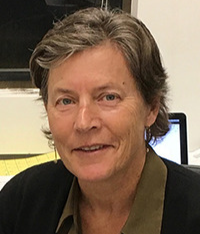Abstract: Cold-air outbreaks off of the eastern US seaboard provide dramatic visual examples of cloud morphological transitions from closed-cell to more open-celled circulations. Such transitions are typically encouraged by boundary layer decoupling induced by near-surface precipitation. Increased ice production within mixed-phase cold-air outbreak clouds is hypothesized to hasten the transitions. Here the microphysics and environmental context of five cold-air outbreaks is interrogated using NASA ACTIVATE (Aerosol cloud meteorology interactions over the western Atlantic experiment) aircraft campaign data from March 2020 and January-March of 2021. Flight paths aligned with the cloud-layer flow span cloud-top temperatures of -5 to -12 $^\circ$C, {\it in situ} liquid water paths of up to 700 g m$^{-2}$, while {\it in situ} cloud droplet number concentrations ($N_d$) of up to 800 cm$^{-3}$ help explain cloud-top effective radii that remain below 10 $\mu$m. In the four coldest cases, small ice was already sampled at cloud initiation, indicating primary ice production was already occurring at temperatures between -4 to -8 $^\circ$C. Further downstream, ice particle number concentrations ($N_i$) of 0.1-2.5 10$^{-3}$ cm$^{-3}$ exceed those predicted by primary nucleation processes and are on par with values over the Southern Oceans observed at colder temperatures. Secondary ice production is enhanced near cloud top, consistent with collisional breakup of graupel and vapor-grown ice particles, and near cloud base, where enhanced ice aggregation near 0$^\circ$C is also evident. Ice enhancement also occurs within the Hallett-Mossop temperature regime (-3 - -8 $^\circ$C) in one case. The highest ice water contents coincide with dendritic growth, perhaps because slower fall speeds allow more time for growth.
The cloud evolution follows a predictable pattern. Buoyancy fluxes reach 400-600 W m$^{-2}$ near the eastern edge of the Gulf Stream, capable of sustaining updrafts reaching five m s$^{-1}$ that support closely-spaced convective cells. Clouds can deepen abruptly through updrafts piercing the capping inversion, detraining at a higher altitude to form a thin overcast stratiform cloud under a new, higher, inversion level. Cloud fraction can remain high despite decoupled boundary layer vertical structures. Such updrafts, at times organized into roll circulations, help to explain the high $N_d$ values. The transitions to lower-albedo cloud structures occur after the air has passed over the Gulf Stream and the boundary layer (and precipitation, if present) has mostly equilibrated to above-freezing temperatures. The surface liquid rainfall rates of the three more intense cold-air outbreaks are a maximum just before the cloud morphologies transition, and correspond to higher cloud liquid water paths, deeper boundary layers, and colder cloud tops. The milder two cold-air outbreaks transition to lower-albedo cumulus through entrainment into a deepening boundary layer, similar to subtropical stratus-to-cumulus. The one case without ice had the warmest minimum cloud-top temperatures (-5C) and weaker surface fluxes and updrafts compared to the other cases, with roll circulations potentially facilitating mesoscale entrainment.
What is the Joint Oslo Seminar (JOS):
- Atmospheric and climate sciences have a stronghold in Oslo among the four institutions University of Oslo, the Meteorological Institute, CICERO and NILU.
- This joint seminar invites renowned international experts to contribute to an informal series of lectures, meant to create interaction with the Oslo atmospheric and climate science community on recent highlights and analysis in the field.
- Normally seminars will be held on Thursdays (12:15 pm -1pm).
